Text
Cherrapunji-The Wettest Place on Earth, Yet no water to Drink

When the monsoon comes to the place, it does not rain; it pours. It could pour continuously for over two months and you may not see the sun for 20-25 days at a stretch. With an average annual rainfall of 11.5 metres, Cherrapunji is listed in geography books as the wettest place on earth.
Some years, it rains much more than the average. In 1974 the place received 24.5 metres of rain and the record for one day is 1563 mm. Yet, Cherrapunji, in the state of Meghalaya in Northeast India, faces severe drought for the rest of the year!
How is it that not a drop of 11.5 metres of rain remains to quench the thirst of the people? The answer lies in the destruction of forests. Once upon a time, the hills around Cherrapunji were full of dense forests. These forests soaked up the heavy rain and released it slowly the rest of the year. Over the years, however, the forests were cut down. The heavy rains washed away the topsoil, turning the slopes into deserts. It is now a mining town with most people making a living out of the extraction of coal and chalk. The dusty air chokes the life out of people.
There is no reservoir to store the water. For over 20 years, the residents have depended on a piped water supply that comes from afar. That supply is always erratic and undependable.
Traditionally, the people of Cherrapunji celebrate the arrival of the rains every year with an elaborate festival. The rain gods do respond generously for four months. Yet the people do not have enough water for the next eight months!
To cap it all, Cherrapunji is no longer the wettest place on earth. The nearby village of Mawsynram now gets more rain than Cherrapunji!
0 notes
Text
Antarctica- A Fragile Ecosystem and Relatively Unexploited
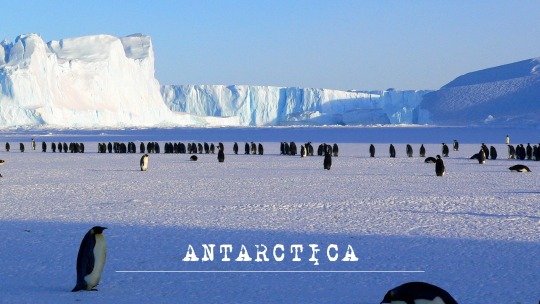
Antarctica is an icy continent, surrounded by the Southern Ocean. It is a fragile ecosystem and is relatively unexploited. The Antarctic ice cap contains 70% of the world’s fresh water. A thin layer on the ocean supports krill (very small shellfish), which is consumed by other fish, seals, penguins, and whales.
Antarctica is a sensitive indicator of environmental changes. Between 1947 and 2000, the mean temperature of the Antarctic Peninsula went up by 2.5 degrees C in summer and 5.6 degrees C in winter. The reason could be global warming from the burning of fossil fuels. With increasing temperatures, huge pieces of the ice shelf have been breaking off. Over some time, this melting of ice could raise global sea levels.
Seals and whales were first hunted in Antarctica, leading to the near-extinction of the southern fur seal, elephant seal, and blue whale. The pollution from the rest of the world has now reached Antarctica. Radioactive particles from atomic testing as well as DDT and other chemical residues have been found in these waters. Tourism that is being promoted now will also have ecological consequences.
No country owns Antarctica, though several countries have made claims on parts of it. In 1991, 41 countries (including India) signed the Antarctic Treaty. They agreed to ensure that Antarctica is used for peaceful purposes, for international cooperation in scientific research, and does not become the scene or object of international discord. The Treaty seeks to establish Antarctica as a zone free of nuclear tests and radioactive waste and includes agreed measures for the conservation of Antarctic flora and fauna.
Several countries including India have been conducting scientific research and exploration for oil and minerals in Antarctica. The first Indian expedition to Antarctica was sent in 1981 and since then Indian scientists have established two research stations, Dakshin Gangotri and Maitri, on the continent. Joint teams representing several scientific organizations in the country have participated in more than 20 expeditions to the continent.
0 notes
Text
One Person's Waste is Another's Wealth.
Save things or waste, it's your choice. Be a Recycler, Be a Saver.
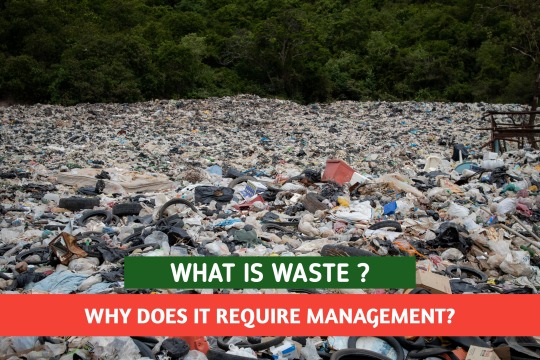
Waste is any material that is not needed by the owner, producer, or processor. Humans, animals, other organisms, and all processes of production and consumption produce waste. It has always been a part of the earth’s ecosystem, but its nature and scale were such that the ecosystem could use waste in its many cycles. In fact, there is no real waste in nature. The apparent waste from one process becomes input to another.
It is the exponential growth of human activities that has made waste a problem to be managed. We are simply producing much more waste than the amount nature can handle.
It is far better to prevent generation of waste than to produce waste and then try to ‘manage’ it. We cannot simply throw away waste. ‘There is no away in throw away’. What we throw away often comes back to us in a different form. What we dispose of remains in the ecosystem and causes some form of pollution. This pollution can have an impact far away from the point of generation and far removed in time too.
The composition, quantity and disposal of waste determine the environmental problems it creates. To minimize the adverse effects of any waste, it has to be recycled, isolated permanently in storage, allowed to decompose and degrade into a harmless state, or treated to remove any toxicity it may have.
Gaseous waste, which is caused mainly by emissions from vehicles and other sources and caries fine particles of matter, leads to air pollution and smog. When gaseous waste is deposited on land as acid rain, it pollutes the soil and water.
Most disposable wastes are in the form of solids, liquids, or slurries. The main categories of such wastes are the following:
Domestic Waste : Sewage, waste water contaminated by detergents, dirt, or grease, household garbage, and bulky waste including packaging material, appliances furniture, office equipment, and used cars.
Factory waste: Solids and effluents from factories of all types. The worst polluters are slaughterhouse, breweries, tanneries, textile, paper and steel mills, and most chemical industries; power plants discharge heated coolant water causing thermal pollution.
Waste from the oil industry: Oil spills, oil leaks, water used for cleaning tankers, etc.
Construction waste: Materials from buildings that are demolished or renovated and materials discarded after completing a building.
Waste from the extractive industries: Mining, quarrying, and dredging create solid waste and slurries.
Plastic waste: Thousands of different goods made of plastic, thrown away after use, are everywhere on land and sea.
Agricultural waste: Mostly organic waste from plants and animals; irrigation water from farms containing fertilizers and pesticides.
Waste from food processing: Organic solid and liquid waste from discarded food materials.
Biomedical waste: Originates mainly from hospitals and clinics and includes blood, diseased organs, poisonous medicines, etc.
E-waste: A more recent form of waste from discarded electronic equipment
Nuclear waste: Radioactive waste from nuclear plants and the manufacturer of nuclear weapons; remains active and dangerous for thousands of years.
Apart from these regular sources, waste also comes from special events:
Waste from natural disasters: Rubble from earthquakes, slag and ash from volcanoes, wastes left behind by floods, cyclones and typhoons.
Waste from wars and conflicts: Apart from dead bodies and destroyed building, wars leave behind exploded and live shells, landmines, etc. In some cases, deadly war material has effects lasting decades. Agent Orange, a herbicide, used the in Vietnam war, and depleted uranium in the 1991 Gulf War are example.
It is very difficult to assess the effects of all types of waste on the environment. We do not know the total amounts, composition, and dispersal of waste. Nor do we have enough scientific knowledge of the long-term impact of most substances that form part of the waste. What is considered non-hazardous today may be declared dangerous tomorrow. In fact, environmentalists feel that we must follow the precautionary principle and treat every chemical or waste as being potentially harmful unless proven otherwise.
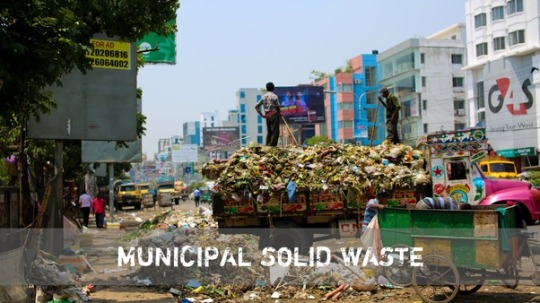
Municipal Solid Waste-
According to the municipal solid waste definition, it is primarily produced in houses. In other words, most municipal solid waste comes from household consumption. However, municipal solid waste includes also some commercial and industrial waste.
Municipal Solid Waste Examples-
The largest component of municipal solid waste is everyday items, such as packaging, Grass clippings, Bottles, Furniture, Clothing, Food scraps, Newspapers, Appliances, Paint, Batteries.
These come from our homes, businesses, schools, and hospitals.
How is Municipal Solid Waste Disposed?
There are helpful disposing methods for half of the annual worldwide municipal solid waste like:
Composting
Recycling programs
Municipal solid waste landfill with advanced technology
Unfortunately, the remaining 50% of worldwide waste products lots of damages due to inappropriate management. This municipal waste is dumped in rivers, on land, and on seas. In the worst case, it is openly burned!
Municipal Solid Waste Pollution
One of the significant sources of environmental problems is incorrect collecting and disposing of municipal solid waste in urban areas. The waste streams originating from industrial commercial solid waste sources are different from the hazardous substances in household waste.
For example, unfortunately, municipal solid waste may be mixed with regulated medical waste. This global issue can cause real problems for many industries, such as factories, farms, hospitals.
Besides, improper disposal of municipal solid waste can cause unsanitary conditions. In turn, these conditions lay waste to human health and the environment, like the Great Pacific Garbage Patch.
Consequently, living things’ lives are in danger due to many factors, from water pollution to large carbon emissions. So, proper solid waste collection, management, and disposal are essential for public health, safety, and environmental quality.
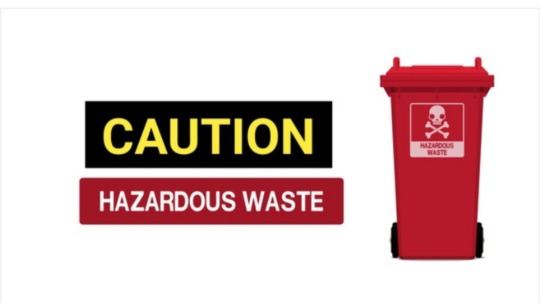
Hazardous Wastes.
hazardous waste means any waste, which by reason of characteristics, such as physical, chemical, biological, reactive, toxic, flammable, explosive or corrosive, causes danger to health, or environment. It comprises the waste generated during the manufacturing processes of the commercial products such as industries involves in petroleum refining, production of pharmaceuticals, petroleum, paint, aluminium, electronic products etc.
For the first time, Rules have been made to distinguish between hazardous waste and other wastes. Other wastes include- waste tyres, paper waste, metal scrap, used electronic items, etc. and are recognised as a resource for recycling and reuse. These resources supplement the industrial processes and reduce the load on the virgin resource of the country.
Problems associated with unscientific disposal of hazardous and other waste
Burning or incineration causes emission of toxic fumes comprising of Dioxins and Furans, Mercury, heavy metals, causing air pollution and associated health-related problems.
Disposal in water bodies, or in municipal dumps leads to toxic releases due to leaching in land and water entailing into degradation of soil and water quality.
The workers employed in such unscientific practices suffer from neurological disorders, skin diseases, genetic defects, cancer etc. Hence, there is a need for systematic management of hazardous and other waste in an environmentally sound manner.
Scientific disposal of hazardous waste through collection, storage, packaging, transportation and treatment, in an environmentally sound manner minimises the adverse impact on human health and on the environment.
The hazardous waste can be disposed at captive treatment facility installed by the individual waste generators or at common hazardous waste treatment, storage and disposal facilities.
Hazardous waste such as lead acid battery scraps, used oil, spent catalysts etc. and other waste such as waste tyres, paper waste, metal scrap etc. are used as raw material by the industries involved in recycling such waste and as supplementary resources for material and energy recovery. Accordingly, it is always preferable to utilise such waste through recycling, or for resource recovery to avoid disposal through landfill or incineration.
What is a Sanitary Landfill?
Sanitary landfills are sites where waste is isolated from the environment until it is safe. Waste is deposited in thin layers (upto 1 m thick) and immediately compacted by heavy machinery. Several such layers are placed and compacted on top of each other to form a refuse cell (up to 3 m thick). At the end of each day the refuse cell is covered with a layer of compacted soil to prevent odours and windblown debris.
There are several requirements for a proper sanitary landfill:
It should be located above the water table.
The area should not be geologically active.
It should not be very near residential communities.
The land must be inexpensive to make the cost of operating the landfill worthwhile.
It must be accessible to roads so that garbage can is delivered easily.
Trained staff should be based at the landfill to supervise site preparation and construction, the depositing of waste and the regular operation and maintenance.
As the matter inside the sanitary landfill breaks down, it generates gases including methane. Some landfills simply vent these gases, while others collect and use them as fuel. Often, sanitary landfills are reclaimed once they are full. The area on top is used to make sports fields, parks, office parks, and so forth.
How is Liquid Waste managed?
Sewage and industrial effluents are in most cases released directly into water bodies - rivers, lakes, or the ocean. Very often they are not treated before release.
The 1972 London Convention prohibits the ocean dumping of hazardous waste. The ocean, however, is still not safe, since all the countries do not observe the Convention. Further, thousands of tonnes of toxic substances (including nuclear waste), dumped into the ocean before the convention came into force, are still present in the ocean and silently polluting the marine environment.
With increasing amounts being generated, management of waste is becoming difficult and expensive. The industrialixed countries have found an easier and less expensive method: export the waste to other countries!
Why are hazardous and Toxic Wastes Exported?
Many of the industrialized countries have a waste management problem. Since their economies are based on constant growth, development, and consumption, wastes are mounting up and they are running out of suitable space for landfills or dump yards. At the same time, these countries have strict environmental regulations that make waste management expensive.
The most attractive option for the industrialized countries is to export the waste to developing countries, where disposal is cheap and environmental regulations are lax. The latter needs the money and the former wants to get rid of the waste. Developing countries do have more space for disposal, but their tropical ecosystems are more vulnerable to the damaging effects of the waste. There are many cases of environmental damage caused in the developing countries due to improper management of imported toxic waste.
At any time, there are a number of ships carrying toxic prowling on the high. Seas, ready to dump the waste on an unsuspecting poor country. Alternately, they just dump the cargo somewhere in the middle of the vast ocean .
Waste management has become an international industry and even some industrialized countries like the UK import waste and make money on it. 90% of the hazardous waste generated in the US is exported to Canada.
The 1989 Basel Convention aims to minimize the creation of hazardous wastes, reduce transboundary movements of such wastes, and prohibit their shipment to countries lacking the capacity to dispose of them in an environmentally sound manner.
0 notes
Text
Let the Fish Swim Freely, Don't Throw Garbage at Them.
Stop marine Pollution.
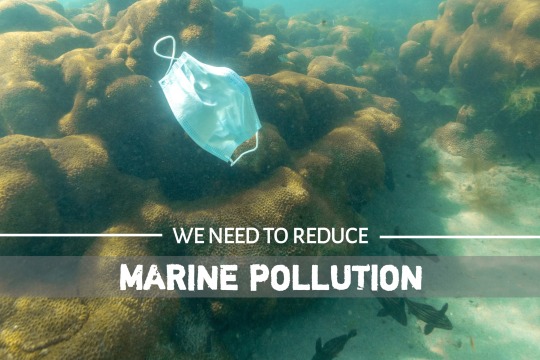
How does marine pollution Occur?
Since the ocean forms 71% of the earth’s surface, most of the pollutants in the atmosphere fall on it. In recent decades, however, there is in addition a huge amount of direct marine pollution caused by human activities.
Industrial discharges and agricultural run-off (about 70 trillion litres a year) containing pesticides, fertilizers, and various toxic chemicals find their way to the ocean. Treated and untreated human and other domestic waste. Treated and untreated human and other domestic waste (about 6 million tonnes a year) end up in the ocean with all their contaminants. In fact, sewage remains the largest source of contamination of the coastal and marine environment.
The oil industry contributes deadly pollution through leaks, spills, and cleaning of tankers.
Nitrogen input into the ocean has been rapidly increasing due to agricultural runoff, atmospheric deposition, and loss of natural interceptors like coastal wetlands, coral reefs, and mangroves.
The result is greater marine and coastal eutrophication. Blooms of toxic or otherwise undesirable phytoplankton are increasing in frequency, intensity, and geographic distribution. Such blooms or red tides greatly affect fisheries, aquaculture, and tourism.
Persistent Organic Pollutants (POPs), which spread through the atmosphere, are found everywhere in the ocean. POPs cause reproductive, immunological, and neurological problems in marine organisms and possibly in humans. Another concern is the increasing amounts of non-biodegradable waste like plastic articles and nets that float in the ocean. Large numbers of birds, turtles, and mammals are killed by entanglement in or ingestion of such waste.
Human activities have changed sediment flows into coasts and the ocean. Areas like deltas that need sediments do not get enough, whereas coral reefs are smothered by them.
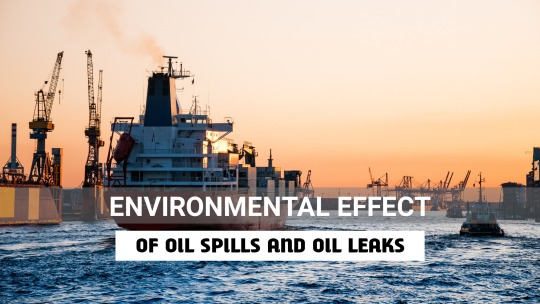
Chemicals in oil kill many marine organisms and coral reefs. Other chemicals form a black layer on the surface that coat the feathers of birds and the fur of marine mammals. They die or drown unless rescued and treated. Heavier components sink to the bottom and kill organisms like crabs and mussels or make them unfit for human consumption. When the oil spill reaches the coast, it destroys fishing activities and tourism.

The 2014 UNEP Report on ‘Valuing Plastic’ include these findings:
Plastic is the most common type of marine litter, comprising up to 80% of total waste in marine litter surveys. Most comes from land-based sources, with marine-based activities such as shipping, cruise lines, and fishing accounting for the remainder.
10 to 20 million tonnes of plastic is finding its way into the world’s ocean each year, costing approximately US$ 13 billion per year in environmental damage to marine eco-systems. This includes financial losses incurred by fisheries and tourism as well as time spent cleaning up beaches.
Over two-thirds of plastic litter ends up on the seabed with half of the reminder washed up on beaches and the other half floating on or under the surface.
Levels of litter in the ocean are increasing in spite of efforts to control the problem.
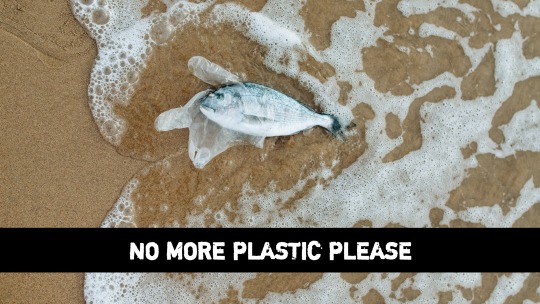
Industry bodies, businesses, governments, civil society and international institutions are recognizing the magnitude of the issue and need to tackle it. Many of them have joined UNEP’s Global Partnership on Marine Litter (GPML) and the global plastic associations have signed a declaration to develop solutions to marine litter.
Large areas of the ocean are now littered with plastic debris. One such area is known as the Great Pacific Garbage Patch.
DID YOU KNOW?

How Bad is coastal pollution?

With the inexorable movement of the world’s population towards the coastal areas, the pollution of the ocean nearer the shores has reached alarming proportions. Thousands of tonnes of sewage and industrial effluents are directly discharged into the ocean in many parts of the world.
A few years ago, shrimp aquaculture was taken up on a large scale on the Indian coast. This industry requires fresh water as well as sea water and uses heavy doses of antibiotics. Within a short time, the effluents from the shrimp farms polluted large areas. The local soil and ground water were affected. Ultimately, diseases and court orders put a stop to coastal aquaculture, but the industry flourishes in inland areas.
It is no wonder that marine pollution finds its way into the fish that we catch. For example, three major shrimp species harvested off Mumbai’s coastal waters have tested positive for lead and cadmium. The fish catch itself is declining in these waters, probably due to marine pollution.
0 notes
Text
Avoid Plastics- Arise Cleanliness & Invite Happiness.
Stop Plastic Pollution.
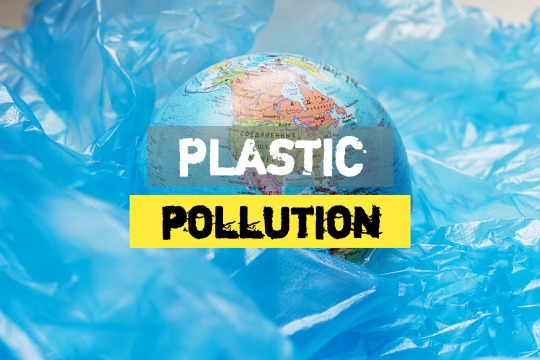
If there is one type of waste problem, which is ubiquitous, it is Plastic Pollution. A few important facts about plastic pollution as per United Nations Environment Program (UNEP):
Since the early of 1950s, more than 8.3 billion tonnes of plastic has been produced. Only 9% of all plastic waste ever produced has been recycled and about 12% has been incinerated. About 60% of that plastic has ended up in either a landfill or the natural environment.
About 8 million tonnes of plastic end up in the world’s oceans every year. Rivers carry plastic waste from deep inland to the sea. This contributes to marine pollution. Rivers like Ganga, Brahmaputra, Indus, Mekong, Yellow, Yangtze, Amur, Nile and Niger are some of the major rivers carrying plastic waste to oceanic environment.
Globally about 300 million tonnes of plastic waste is generated every year. Half of all plastic produced worldwide is used only once and then trashed away. Most common examples of single-use plastics are cigarette butts, pkastic drinking bottles, plastic bottle caps, food wrappers, plastic grocery bags, plastic lids, straws and stirrers, and foam take-away containers.
Plastic pollution has become an all-pervasive problem, with some scientists suggesting that it could serve as a geological indicator of the Anthropocene era!
Developed countries like the United States, Japan and many European countries produce significant amounts of plastic waste. Per capita annual plastic consumption in the USA is about 100 kg, in Europe it is around 65 kg and in China is around 40 kg. This is much higher than the global average of 28 kg of plastic use per person annually.
However, developed regions like European Union, Japan and the USA are relatively good at managing plastic waste. Developing countries like China, Vietnam, Indonesia etc. are fast growing. As consumptions boom, plastic waste generation also increases.
The most worrisome feature of plastic pollution is that it remains in the environment for countries. Most plastics are non-biodegradable. Over time, they slowly break down into smaller fragments known as ‘Microplastics’. These are extremely small plastic pieces that are less than 5mm in size. Microplastics can come from multiple sources and can be either primary microplastic or secondary microplastic.
Primary microplastics are tiny particles designed for commercial use. One example is of microbeads. These are very tiny pieces of manufactured polyethylene plastic that are added as exfoliants to health and beauty products, like cleansers and toothpaste.
Secondary microplastics are those which are formed from larger plastic debris that degrades into smaller and smaller pieces. The breakdown can take place due to the sun’s radiation or the action of ocean waves.

Plastic bags can block waterways and exacerbate natural disasters like flooding. For example, one of the reasons for the Mumbai flooding of 2019 was plastics clogging the drainage system of the city.
By clogging sewers, plastics provide breeding grounds for mosquitoes and pests. This was because plastic bags can increase the transmission of vector-borne diseases like malaria.
Plastic bags are often mistaken for food by turtles and dolphins. Marine organisms like dolphins, turtles, whales, and fishes can ingest them and high concentrations of plastic materials, have been found blocking the airways and stomachs of hundreds of species.
Microplastics are a bigger problem as it is easily ingestible by fish. This way, plastics eventually enter human food chains. Microplastics have been detected in marine organisms from plankton to whales, in commercial seafood, and even in drinking water.
Styrofoam products are generally used for making disposable plastic cutlery like glasses, cups etc, It contains carcinogenic chemicals like styrene and benzene. These, if ingested, can damage the nervous systems, lungs and reproductive organs. The toxins in styrofoam containers can leach into food and drinks.
Disposing of plastic waste by burning it, in open-air pits releases harmful gases like furan and dioxin.

BEAT PLASTIC POLLUTION
To tackle the plastic waste menace, the theme of UNEP’s World Environment Day 2018 was ‘Beat Plastic Pollution’. World Environment Day 2018 was hosted by India. The objective was to build momentum to fight the plastic waste problem globally. Over here, India for the first time made a commitment that it will ban all single-use plastic by 2022. however, later at the United Nations Environment Assembly’s meeting (September 2019), this was revised and India committed to reducing plastic use by the year 2030.
Recommendations offered by the UNEP to policymakers to tackle plastic pollution were:
Government need to improve waste management practice. They may introduce financial incentives to change the habits of consumers, retailers and manufacturers.
Promote eco-friendly alternatives to plastics. Examples include biodegradable cutlery, and bamboo straws used in India.
Strong government policies are needed for encouraging a circular model of economy which places emphasis on reuse and recycling.
Educate consumers to enable voluntary plastic reduction strategies.
Successfully implement bans or levies on the use and sale of single-use plastics. Countries like Kenya, Botswana, Peru and Chile have already done that.
Later in September 2018, the UNEP along with European Union also launched the Global Plastics Platform to reduce plastic pollution. It is a network of member states to support countries and cities in establishing policies to reduce plastic pollution. Support will be provided for the transition to a more circular economy.
0 notes
Text
Need Clean Water? Stop Dumping Garbage Into the Waters.
Stop Water Pollution.

Water pollution is the contamination of water sources including ponds, lakes, rivers, ground water and the ocean. Water pollution occurs when pollutants are discharged directly or indirectly into water bodies without removing harmful compounds. Water pollution affects plants and organisms living in these bodies of water as well as human communities that use the polluted water.
Here are some UN statistics and facts on water pollution:
The major sources of water pollution are from human settlement and industrial and agricultural activities.
Every day, 2 million tonnes of human waste are disposed of in water bodies.
At least 1.8 billion people worldwide are estimated to drink water that is faecally contaminated. An even greater number drink water, which is delivered through a system without adequate protection against sanitary hazards.
In developing countries, 70% of industrial wastes are dumped untreated into waters where they pollute the usable water supply
Nitrate from agriculture is the most common chemical contaminant in the world’s groundwater aquifers.
Half of the world’s wetlands, which act as natural filters, have been lost since 1900.
What are the Pollutants of fresh Water and what are the effects?
Most of the freshwater sources in the world like rivers, lakes, and ground water are already polluted. This is true even of remote places like the polar regions. Most of the pollution that ultimately reaches the ocean contaminates freshwater sources on the way.
The main categories of water pollutants and their effects are:
Sediments: Excessive amounts of soil particles carried by flowing water, when there is severe soil erosion. Sediments cloud the water and reduce photosynthesis, clog reservoirs and channels, smother coral reefs, destroy the feeding grounds of fish, and disrupt aquatic food webs.
Oxygen-demanding wastes: Organic waste such as animal manure and plant debris decomposed by bacteria, from sewage, animal feedlots, paper mills, and food processing facilities. Bacteria that decompose these wastes deplete the oxygen and cause the death of fish and other aquatic organisms.
Infectious Microorganisms: Parasitic worms, viruses, and bacteria from infected organisms and human and animal wastes. They are responsible for water-borne diseases that kill thousands of adults and children, primarily in developing countries.
Organic compounds: Synthetic chemicals containing carbon from industrial effluents, surface runoff, and cleaning agents. These chemicals cause many health problems for humans and harm fish and wildlife.
Inorganic nutrients: include nitrogen and phosphorus from animal waste, plant residues, and fertilizer runoff. The nutrients can cause eutrophication and can affect infants and unborn babies.
Inorganic chemicals: Acids, salts, and heavy metals like lead and mercury from industrial effluents, surface runoff, and household cleaning agents. They make water unfit for drinking or irrigation, harm fish and other aquatic organisms, cause many health problems for humans, and lower crop yields.
Radioactive substances: Wastes from nuclear power plants, nuclear weapons production, and mining and refining uranium and other ores. Such substances cause cancers, birth defects, miscarriages, etc.
Thermal Pollution: Hot water from industrial processes. That heat lower oxygen levels and makes aquatic organisms more vulnerable to disease, parasites, and toxic chemicals. When the hot water is let in, the sudden increase in temperature produces thermal shock in aquatic organisms.
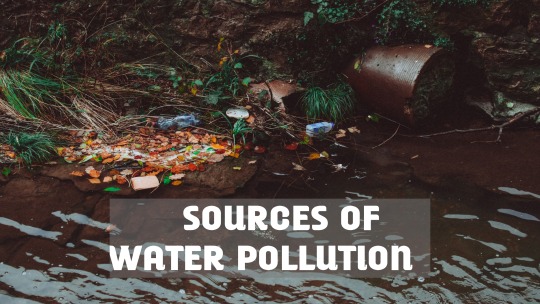
Major sources of water pollution are as below:
Domestic Sewage: Human beings use water for drinking, cooking, washing clothes, gardening, recreation, etc. The discharged water has soluble and insoluble, organic and inorganic matter. It includes detergents, toxic heavy metals and even pathogens. In the municipal drains the domestic sewage is mixed up with garbage from urban and rural settlements. This highly polluted water is discharged into rivers, lakes and ponds. Thus the domestic waste and garbage are the main source of water pollution.
Industrial Waste: The industrial wastes are most harmful of all water pollutants as they contain toxic metals (lead, mercury, zinc, copper, chromium and cadmium) and toxic non-metals (arsenic, acids, alkalis, cellulose fibers, coloring and bleaching materials, petrochemicals, etc.). These pollutants are continuously discharged in the water bodies either directly or from waste dumps.
Agricultural Waste: Water pollution caused by agriculture is mainly an outcome of fertilizers and agricultural chemicals such as insecticides and herbicides that runoff into streams and lakes. They are rich in many nutrients and lead to phenomenon like eutrophication.
Off-shore Oil Drilling: This pollution is mainly due to the loss of oil during off-shore exploration, oil drilling and extraction of mineral oil, leakage of oil and natural gas from under-water pipelines and oil spills from oil tankers. The waste oil also reaches the oceans and seas due to leakage during loading and unloading of oil tankers, runoff from the roads at seaports and washing of oil tankers.
5. Thermal Pollution: Most of the large-scale industrial units, thermal power plants, nuclear power plants, oil refineries, etc., are located along the banks of rivers. These industries use large quantities of fresh water for cooling purposes. The hot water is generally discharged into the rivers. This increases the temperature of river water by about 10 Degrees Celcius, and this leads to thermal pollution of water. This has a harmful effect on aquatic organisms, such as fish and algae. The increase in temperature of river water also decreases the level of dissolved oxygen, which results in the release of foul and toxic gases.

About 2 billion people, approximately one-third of the world’s population, depend on ground water for their daily needs. About 600 cubic km of ground water is withdrawn every year, mostly from shallow aquifers.
It was believed for long that water that slowly seeps or infiltrates into the ground would be thoroughly filtered by the soil and hence ground water would be free of pollutants. We know now that this is not necessarily true. The filtering capacity of soil varies greatly from place to place. Further there is also a limit to the amount of pollutants the soil can filter.
Excessive extraction leads to the natural pollution of ground water. Example- fluoride concentration. In coastal areas, when water tables drop due to excessive extraction, there is intrusion of salt water and this is often an irreversible process.
Ground water receives pollutants from septic tanks, landfills, hazardous waste dumps, and underground tanks containing petrol, oil, chemicals, eyc. Substances like paint thinners and motor oil that we pour on the ground ultimately reaches the ground water.
Groundwater pollution is long-lasting because it does not get flushed or decomposed away. The flow of groundwater is very slow, decomposing bacteria are few in number, and the cold temperatures slow down the decomposing process. As a result, even degradable waste stays in the water for hundreds to thousands of years. In any case, non-degradable waste like lead, arsenic, and fluoride remains in groundwater permanently.

Thermal Pollution is defined as sudden increase or decrease in temperature of any natural body of water, which is caused by human activity. This normally occurs when a plant or facility takes in water from a natural resource and puts it back with an altered temperature. Most often, water is used as a coolant and hence the discharged water is at a higher temperature.
Thermal population also occurs due to other causes. Here are some examples:
Deforestation, which exposes water bodies to direct sunlight.
Run-off from hot surfaces such as roads falling into water bodies.
Volcanoes and geothermal activity under the ocean that trigger warm lava to raise the temperature of water.
What is the impact of thermal pollution?
Thermal pollution has negative effects such as the following:
Decrease in the levels of dissolved oxygen in water, which can suffocate species. An example is the mass of fish kills seen in some water bodies.
Loss of biodiversity because some species cannot tolerate the higher water temperatures - their reproductive systems are affected and they migrate to other areas.
Alien species could migrate into the area.

pH of water bodies depends on both natural and human factors. When rain water falls through air, gases such as carbon dioxide dissolve in rain water and form carbonic acid. Therefore, rain water is slightly acidic in nature. It has pH value of 5-6
Water organisms can live in pH values of about 5.0 to 9.0. Fishes prefer waters between 6.0 and 8.2. The suitable pH for most of the aquatic organisms is 6.0
What are the effects of decrease in pH value of water?
Sulphur dioxide and nitrogen oxide form sulphuric acid and nitric acid. These mix with rainwater to form acid rain. pH of water falls to 4 or lower due to acid rain. It kills fish and many aquatic animals. It decreases crop production. Historical buildings are blackened due to acid rain.
Mining operations also add acids to water. Metals such as iron, cadmium, lead, chromium etc dissolve more easily in acidic water. Many heavy metals become toxic when dissolved in water. This causes water pollution.
Bacteria and fungi decrease in acidified water. This decreases the rate of decomposition of organic matter. As a result, the nutrient cycling is disturbed.

Water pollution due to the toxic elements and their effects :
LEAD
Sources of lead in water
Lead processing plants working with lead ores
Production of lead acid batteries.
Lead pipes: Lead is found in drinking water from plumbing.
Lead contaminated soil: Plants take up high levels of lead up to 500 ppm from contaminated soil. Thus, lead enters the food chain. It affects each member of the chain.
Organic lead is used in petroleum industries and inorganic lead compounds for battery and paint production.
Lead smelters, household dust etc also add lead to water.
Harmful effects on lead as water pollutant
Lead poisoning causes headache, depression, nausea, muscle pain, loss of appetite etc. High doses of lead cause colics, abdominal pain, memory loss, kidney failure, slin pigmentation and even paralysis.
Lead pollution can damage internal organs especially the brain, nervous and reproductive systems. Organic lead products may be cancer causing also.
Women and children are more affected by lead poisoning than men. Lead causes menstrual disorder and infertility. It increase risk of stillbirth. In children, it can cause learning problems, and mental retardation.
Lead poisoning decreases wild bird populations.
MERCURY
Sources of mercury in water
Mining of mercury ores
Use of mercury in products and manufacturing, production of zinc, steel and other metals.
Coal fired power plants where burning of coal releases mercury.
Use of mercury in industries to prepare thermometers, pressure gauges, electric switches, fluorescent lamps, and dental fillings.
Use Of Inorganic mercury compounds in batteries, paper manufacturing and the chemical industries.
Release of mercury naturally present in limestone, coal, crude oil, metal ores, volcanic eruptions etc.
Mercury present in atmosphere enters lakes and other water bodies through rain and snow.
Harmful effects of mercury as water pollutant
When mercury is deposited in lakes or waterways, bacteria convert it to methyl mercury. Methyl Mercury deposits in algae and is eaten by smaller fish, which in turn are eaten by larger fish. Mercury present in fishes is eaten by human or other wildlife. Methyl mercury is able to enter our bloo and organs. It can damage brain and nervous system.
Acute mercury poisoning can lead to depression, Suicidal tendencies, Paralysis, Kidney failure, Allergies
Minamata disease in japan was caused due to mercury poisoning.
Children and Pregnant women are more affected by mercury. Inorganic mercury is easily absorbed into the bodies of children.
Some people show allergic response for very small amounts of mercury.
CADMIUM
Sources of cadmium in water
Corrosion of galvanized pipes when soft water with low pH passes through these pipes.
Erosion of natural deposits,
Discharge from metal refineries
Runoff from waste batteries and paints.
Metal processing (Zinc, aluminium, iron and steel) industries
Mine waters
Battery re-cycling plants
Coal and oil combustion in power plants
Use of cadmium for metal plating, coating, for making transportation equipment, machinery and baking enamels, photography, nickel-cadmium solar batteries and pigments.
Use of cadmium sulphide as pigments in plastics.
Harmful effects of cadmium as water pollutant
Cadmium deposits in fishes. When human beings eat fishes, cadmim is absorbed. It binds to a low molecular weight protein metallothinein in liver, kidney, intestine and pancreas. Kidneys are most affected by cadmium poisoning. Kidney stones are formed.
Cadmium poisoning causes following; Nausea, Vomiting, Diarrhoea, Muscle cramps and loss of calcium from bones, Yellow colouration of teeth,Decrease of red blood cells, Damage of bone marrow, Hypertension, Kidney failure, Lung irritation.
The disease Itai Itai is caused by cadmium contamination associated with a diet low in calcium and vitamin D. It is osteomalacia and severe urinary system disease.
Cadmium compounds can also cause various types of cancer.
ARSENIC
Sources of Arsenic in water
Arsenic occurs in more than 200 minerals mainly as arsenopyrite (FeAsS) and other sulfide minerals. Arsenic is found as local bedrock mainly in Bangladesh, West Bengal (India) and some regions of China. In all these areas, arsenic occurs in deltaic alluvial sediments in the shallow aquifers. These are the main sources of ground water arsenic pollution.
Erosion of natural deposits,
Runoffs from glass and electronics production wastes
Industrial effluents.
Agricultural, mining and smelting activities.
Weathering of rocks and minerals followed by leaching and runoff. Igneous rocks formed from volcanoes have high arsenic content.
Igneous rocks formed from volcanoes have high arsenic content.
Harmful effects of arsenic in water
Arsenic in drinking water causes bladder, lung and skin cancer. It may also cause kidney and liver cancer.
Arsenic causes serious skin problems.
Arsenic harms the central and peripheral nervous systems.
It affects the heart and blood vessels.
It also may lead to birth defects and reproductive problems.
Keratosis on the palms of the hands and sores of the feet
Black foot disease,
Cardiovascular disease, Bone marrow depression
Arsenic is harmful to the liver and causes cirrhosis of the liver sometimes.
Water Pollution Control and Abatement
There are three major ways of slowing and managing water pollution.
Source Reduction of waste - It means producing less waste from input sources of pollution like industries and households. It is least costly and environmentally most benign method of slowing water pollution.
Wastewater Treatment - In this, wastewater from industries, cities and households is treated before discharge into natural streams. There can be multiple techniques of water treatment-
Chlorination - It kills micro-organisms such as harmful bacteria and disinfects water.
Septic-Tank Sewage Disposal System - This is deployed in areas with no central sewage treatment facilities. The sewer lines carry waste water from households to a septic-tank. The tank is designed to separate solids from liquids. The wastewater is then biochemically treated before disposal into natural water streams.
Wastewater Treatment Plants - These are specially designed plants to treat municipal sewage from homes, businesses and industrial sites. The raw sewage is delivered to the plant through network of sewer pipes. The wastewater treatment is a three step process - primary treatment, secondary treatment and advanced treatment. Following treatment, the wastewater may be discharged into natural water streams or used for crop irrigation.
Nanotechnology - In this, use of nano- particles (extremely small particles) is done. These can capture heavy metals such as lead, mercury and arsenic from water.
3. Remediation - This means cleaning up natural water streams like rivers, lakes, groundwater etc. after they have been polluted. Although it is much more expensive than reducing pollutant input or wastewater treatment before discharge, it is sometimes the only option. For example - Groundwater can be treated with microbes to decompose organic pollutants.
Lake acidity caused by acid rain can be treated with chemical bases such as lime. Lime is disseminated in the lake to neutralise acidity.
0 notes
Text
Prevent Air Pollution, Protect Nature.
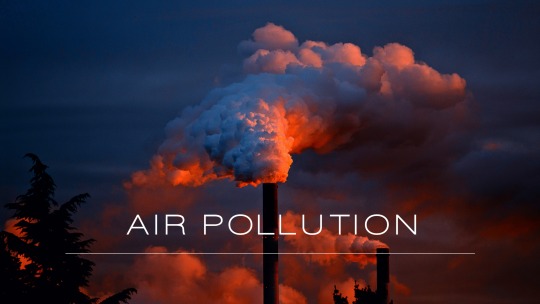
Over the years, air pollution has become the greatest environmental challenge faced by people, especially in urban areas. Most often, it is caused by human activities like burning of fossil fuels in thermal power plants, and other industrial processes like petroleum refining, smelting, mining, construction, transportation, agriculture etc. In addition to human sources of air pollution, it can also be caused by natural processes. For example, volcanic eruptions release Sulphur dioxide and other pollutants, which react in the atmosphere to produce volcanic smog, called as ‘Vog’.
Air pollution can occur at various scales, from local to regional.
Local air pollution - This occurs at a small spatial scale. For example, indoor air pollution caused due to use of unsafe cooking fuel like wood by poorer households in India is a type of local air pollution.
Regional air pollution - It is generally caused by the running of industries, thermal power plants and vehicles. It is mostly a problem in urban areas of the world. However, in developing countries like India, the burning of crop residue after harvest is also a major contributor to regional air pollution. there have been two recent examples where large-scale forest fires (Brazil's forest fires of 2019 and Australian bush fires of 2019- 2020) caused regional air pollution.
Types of Air Pollutants:-
Based on origin, air pollutants can be classified as Primary and Secondary Pollutants.
Primary Pollutants - These are emitted directly into the air from sources at the Earth’s surface. Examples- Carbon monoxide, nitrogen oxides, and sulphur dioxide.
Secondary Pollutants - The regional gases can also react chemically in the atmosphere to form other compounds which are known as secondary pollutants. Examples- are ozone, smog, and photochemical pollutant.
Particulate Matter- Apart from gasses, the second type of pollutant is a particulate matter which consists of a wide range of liquid and solid particles known scientifically as aerosols. Some of these are visible as smoke, soot or dust; The smallest of these particles are hazardous to human health. Of particular concern are PM 2.5 and PM 10 as these can be easily inhaled into the lungs and can be absorbed into the bloodstream. Such particulate matter is called Respirable Particulate Matter. As with gases, particles can be directly emitted into the air or can form gases. For example, such particles from wood burning can cause a brown haze over the region and larger particles may interfere with plant growth because they deposit on the leaves.

Air pollution has both natural and human sources
Natural Air Pollution
Dust from Natural sources, usually large areas of land with little or no vegetation
Methane is emitted by various sources.
Radon gas from radioactive decay within the Earth’s crust.
Smoke and carbon monoxide form Wildfire
Vegetation, in some regions, emits environmentally significant amounts of Volatile organic compounds (VOCs) on warmer days. These volatile organic compounds react with primary anthropogenic pollutants- specifically, NOx, SO2, and anthropogenic organic carbon compounds- to produce a seasonal haze of secondary pollutants. Black gum, poplar, oak and willow are some examples of vegetation that can produce abundant VOCs. The VOC production from these species results in ozone levels up to eight times higher than the low-impact tree species.
Volcanic activity, which produces sulphur, chlorine and ash particulates
Anthropogenic Sources
Stationary sources include smoke stacks of power plants, factories and waste incinerators, as well as furnaces and other types of fuel-burning heating devices. In developing and poor countries, traditional biomass burning is the major source of air pollutants; traditional biomass includes wood, crop waste and dung.
Mobile sources include motor vehicles, marine vessels, and aircraft.
Fumes from paint, hair spray, varnish, aerosol sprays and other solvents
Waste deposition in landfills generates methane. Methane is also an asphyxiant and displaces oxygen in an enclosed space. Asphyxia or suffocation may result if the oxygen concentration is reduced to below 19.5% by displacement.
Military resources, such as nuclear weapons, toxic gases, germ warfare and rocketry
Particulate matter from mining activities.

What are the sources of outdoor Air Pollution?
The sources of outdoor air pollution are:
Burning of fossil fuels in
Automobiles, domestic cooking, and heating
Power stations and industries (primarily the chemical, metal, and paper industries)
Mining activities leading to dust as well as fires.
Burning biofuels, tropical rainforests,wastes of all kinds, etc.
Natural emissions from animals and decaying organis matter
Temporary, but severe, air pollution can occur due to disasters like earthquakes, volcano eruptions, dust storms, leak of gases (like the Bhopal gas tragedy case), and armed conflicts, etc. Even festivals (for example, Diwali with its crackers) can create air pollution. Dust storms are typically formed in desert areas and from there they can spread to places thousands of kilometres away.
Industries and automobiles are by far the main contributors to outdoor air pollution across the world.
What are the effects of outdoor Air Pollution
At low levels air pollutants irritate the eyes and cause inflammation of the respiratory tract. If the person already suffers from a respiratory illness, air pollution may lead to the condition becomimg chronic at a later stage. It can also accentuate skin allergies.
Many pollutants also depress the immune system, making the body more prone to infections. Carbon monoxide from automobile emissions can cause headache at lower levels and mental impairment and even death at higher levels.
Particulate matter can reduce visibility, soil clothes, corrode metals, and erode buildings. On a larger scale. Air pollution leads to acid rain, ozone layer depletion, and global warming.
The WHO Global Burden of Disease Assessment for 2010 estimated that 627000 premature deaths in India could be attributed to outdoor air pollution. Of the pollution-related risks, a substantial increase was observed in heart diseases, cerebrovascular diseases, chronic obstructive pulmonary diseases, lower respiratory infections, and cancers (in the trachea, lungs, and bronchitis). These estimates do not include acute impacts such as asthma attacks, eye irritations, and other respiratory ailments. We do not yet know the long-term health impacts of air pollution on vulnerable populations such as children and the elderly.

We give importance and attention to outdoor air pollution, but we do not realize that indoor pollution can be equally damaging.
Pesticides,mosquito repellents, cleaning agents, etc. used in urban households can cause toxic conditions. Building materials like asbestos, glass fibre, paints, glues, and varnishes are all health hazards. They can cause irritation of the eyes and skin, respiratory ailments, and cancer.
Air-conditioned rooms and offices cause a broad spectrum of health complaints because the sealed space accumulates various contaminants. Cigarette smoke affects both smokers and non-smokers. The concentration of pollutants indoors may be five times more than outdoors.
The most common pollutants in urban interiors are cigarette smoke, gases from stoves,formaldehyde (from carpets and furniture), pesticides, cleaning solvents, and ozone (from photocopiers). Organisms like viruses, bacteria, fungi, dust mites, and pollens also thrive in the many ducts found in office buildings.
Urban indoor pollution results in ailments like colds, influenza, and upset stomachs. Since these are common ailments, the connection with indoor pollution is often missed. Indoor pollution can also cause eye irritations, nausea, depression, etc., collectively called the ‘sick Building Syndrome’.
Air Pollution Control and Abatement
There exist two basic strategies for controlling air pollution - to reduce the generation of air pollutants or to collect, capture and retain the pollutants before they enter the atmosphere. The following are the major ways to achieve this:
Control of pollutants like carbon monoxide, nitrogen oxides and hydrocarbons in urban areas is achievable through pollution control measures for automobiles. It will also limit ozone formation in the lower atmosphere. Clean fuel-based public transport systems like Compressed Natural Gas (CNG) buses or metro rail also help in substantial reduction of emissions. Public transport systems like Bus Rapid Transport (BRT) systems have proved to be effective in reducing vehicular pollution in cities. Globally cities like Curitiba (Brazil), and Bogota (Colombia) have successful examples of BRT systems. In India, BRT systems run in cities like Bhopal, Indore and Ahmedabad. Hybrid cars and electric engines offer another innovative means of emission control.
As the main source of sulphur dioxide emissions is the burning of sulphur-rich coal, so using low-sulphur coal is an obvious solution. A few techniques for this are:
Cleaning up relatively high-sulphur coal to remove sulphur. In this, coal is washed with water. Iron sulphide settles out due to its relatively high density. But cleanup of coal by washing has only limited effectiveness as it removes sulphur only partially.
Coal Gasification -which converts coal that is relatively high in sulphur to a gas in order to remove the sulphur. The gas obtained from coal is quite clean to use.
Supercritical Technology-based Coal Power Plants - These power plants operate at higher temperatures and pressure than traditional power plants. Thermodynamically, such power plants operate at pressure and temperature above the critical point of water. This results in better thermal efficiency of power plants and reduced fuel consumption. Improved efficiency also means fewer emissions of greenhouse gases and pollutants like NOx. SOx and particulate matter.
Emphasis on clean energy sources like solar and wind to reduce dependence on fossil fuel burning for generating electricity.
Particulate pollution control can be done through a variety of settling chambers or collectors. The collectors have a mechanism that causes particles in gases to settle out in a location where they can be collected for disposal. This is an effective way to control particulate pollution from power plants and industry.
0 notes
Text
Join the Green Revolution and Stop Environmental Pollution
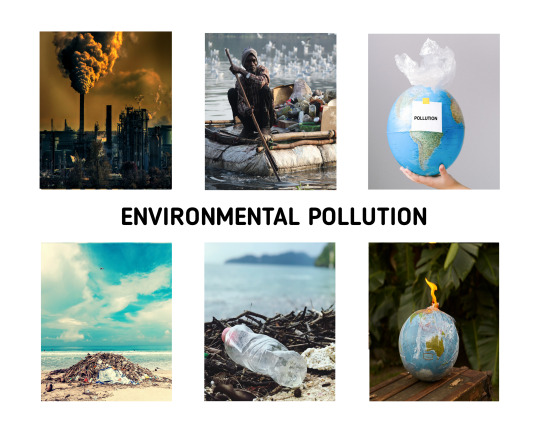
Environmental Pollution means the presence of undesirable substances in any segment of the environment, primarily due to human activity- discharging byproducts, waste products, or harmful secondary products, which are detrimental to man and other life forms. Environmental pollution is now considered a global phenomenon, which is increasingly attracting the attention of human beings of its severe long-term consequences. Over the past couple of decades, various sources of pollution have been identified that affect the composition of water, air and soil of the earth. Therefore, environmental pollution can be understood as:
Pollution as local concentrations in matter cycling - All ecosystems consist of biogeochemical cycling of matter. Pollution represents the accumulation of matter in harmful concentrations at some stage of matter cycling. For example, soil contamination by nutrients due to the over-application of chemical fertilizers in agriculture.
Pollution as an accelerated natural process - Human activities accelerate the pace of matter cycling and this causes the generation of matter at toxic concentrations. For example, the burning of fossil fuels releases tonnes of carbon into the atmosphere that was stored as coal or petroleum underground. Had it not been for human consumption of fossil fuels, these would have taken millions of years to recycle.
An environmental pollutant is an excess of any biological, physical or chemical substance that is potent enough to be harmful to life in some form.

Types of environmental pollution
Pollution has become a widespread problem affecting all the natural reservoirs or sinks of the planet. Based upon the occurrence of sinks, major types of environmental pollution are:
Air Pollution - It is the accumulation of gaseous, particulate wastes and toxic compounds in the atmosphere. It is of two types - indoor air pollution and ambient (outdoor) air pollution.
Water Pollution - It is defined as the degradation of water quality such that it is rendered unusable for its intended purpose. It can be either surface water pollution or groundwater pollution.
Soil Pollution - It is the presence of chemicals in soils that are either out of place or higher than normal concentrations.
Sources of Environmental Pollutants
Waste generation has become a by-product of human living post-industrial revolution. Major sources of environmental pollutants are:
Industrial Sources - Major industries contributing to pollution are manufacturing; power generation like coal-based power plants; mining, and construction. Different industries, based on their nature, can cause air, water or soil pollution.
Vehicular Sources - petrol and diesel-based automobiles like cars, heavy-duty trucks, and passenger vehicles all generate toxic exhaust fumes. Vehicular emissions are mainly responsible for air pollution.
Agricultural Sources - Agricultural operations like the cultivation of crops and animals generate agricultural wastes. These are rich in nutrients like nitrogen and phosphorous. They may enter into water streams as agricultural run-off or stay on land causing soil pollution.
Domestic Sources - These include households that generate sewage rich in nitrogen and phosphorous causing water pollution.
0 notes
Text
Mangroves- Where land and water meet.

Mangroves-Introduction
Mangroves are unique ecosystems found in intertidal zones of coastal areas. They grow in warmer tropical and sub-tropical latitudes up to latitudes 30 degrees usually. Thus, these are the coastal wetlands of warmers regions of the planet and are also called as tidal forests.
Characteristics features of mangroves are:
The mangrove vegetation is adapted to grow in brackish waters of intertidal zones, areas with low-oxygen soil (or hypoxic soil). The salt-tolerant mangrove vegetation is called as halophytic vegetation.
The adaptations of mangrove vegetation which allow it to survive in brackish waters are
Aerial Breathing Roots/Pneumatophores - Specialized above ground roots which take up oxygen from the atmosphere.
Stilt Roots - Roots diverge from stems and branches and penetrate into soil some distance away from the main stem. Roots also have many pores through which atmospheric oxygen enters into the roots.
Vivipary - It is a unique way of reproduction of mangroves in saline and little oxygen conditions. Seeds germinate into seedlings while being still attached to the parent tree. They photosynthesize while still attached to the mother tree. The parent tree supplies water and necessary nutrients. They are buoyant and float in the water for sometime before rooting themselves on suitable soil.
Salt Excretion - Mangrove trees either excrete the salt from their leaves, roots, or branches.
Other adaptations include succulent leaves, sunken stomata and buttressed roots.
Global Distribution- Mangroves found in intertidal zones (that is the zone between high tide line and low tide line) of coastal areas. They grow in warmer tropical and sub-tropical latitudes up to latitudes 30 degrees usually. Mangroves cover less than 1% of world’s surface with total mangrove area of around 150000 sqkm (source: World Atlas of Mangroves,2010). This is approximately 1% of the tropical forests of the world. Asia has the largest amount of world’s mangroves.
Significance of Mangroves
As mangroves are coastal wetlands, they also provide range of ecosystem services:
Bioshields - mangroves are coastal bio-shields as they provide storm protection against cyclonic storms, hurricanes and tsunami by reducing their damaging impact on human lives and properties. In areas where mangroves have been cleared coastal damage due to tropical cyclones is very severe. Their protective role has been widely recognised especially after the devastating Tsunami of 2004.
Foundation Species - The complex roots system facilitates accumulation of organic detritus and inorganic nutrients, thus acting as nursing and breeding grounds for micro-organisms, birds, marine and coastal species like reptiles and fishes. As mangrove forests provide habitat for many other species, mangroves are also called as Foundation Species’
Shoreline Stabilization- Mangrove forests act as zone of land accretion due to trapping of fine sediments thereby arresting soil erosion and stabilising coastlines.
Carbon Sinks - Mangrove forests are one of the world’s principal stores of Blue Carbon’ thus playing a critical role in climate change mitigation through carbon sequestration. A hectare of mangrove forest sequesters up to four times as much carbon as a similarly sized tract of rainforest.
Economic Signification - Mangroves act as an important source of livelihood for the coastal communities dependent on the collection of honey, tannins, wax and fishing. These also provide timber, firewood and medicinal products.

Global Mangrove Loss and Causes
Despite their importance, mangroves are disappearing at a global loss rate of 1.38% per year. As per Global Forest Watch (an online forest monitoring platform that relies on satellite data for forest survey), the world lost 192000 hectares of mangroves cover from 2001 to 2012. This is a total loss of 1.38% since the year 2000 or 0.13% of loss annually. Though this is relatively lower as compared to the rate of loss of tropical forests in general, yet it needs to be checked. The rate of tropical deforestation from 2000 to 2012 was about 4.9% or 0.41% annually.
Major causes of mangrove deforestation are:
Deforestation - Clearing of mangroves due to urban expansion, shrimp aquaculture, over-exploitation of timber, agriculture expansion, rice and palm oil cultivation
River changes - Dams and irrigation systems reduce the amount of freshwater reaching mangrove forests, changing the salinity level of water in the forest. If salinity becomes too high, the mangroves cannot survive. Freshwater diversions can also lead to mangroves drying out.
Climate Change - causes sea level rise and altered rainfall, thereby causing mangrove loss.
Pollution- Fertilizers, pesticides, and other toxic man-made chemicals carried by river systems from sources upstream can kill animals living in mangrove forests, while oil pollution can smother mangrove roots and suffocate the trees,
0 notes
Text
AFFORESTATION AND REFORESTATION
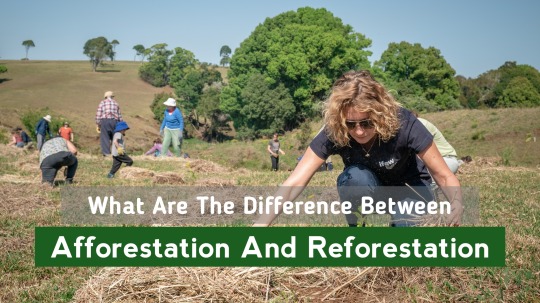
Afforestation and reforestation refer to the act of planting trees in order to create a forested area. While both have a similar outcome, afforestation is not the same as reforestation.
What are the differences?
Afforestation is the planting of trees in an area where there were no trees before, creating a new forest.
Reforestation is the planting of trees in an area where the number of trees has decreased, regenerating an existing forest.

Both afforestation and reforestation are key nature-based solutions to tackle our climate crisis and halt ecosystem degradation.
Some of the benefits include:
Preventing deforestation.
Increasing biodiversity.
Avoiding Soil degradation.
Reducing air pollution.
Increasing carbon Sequestration.
0 notes
Text
No Land, No Life! Stop Land Degradation.
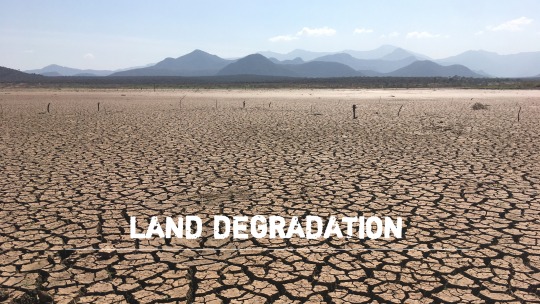
Land which covers 30% of the Earth’s surface is literally the ground beneath our feet. It is significant for our survival as it contains a very precious natural resource-soil.
Soil is a combination of weathered rocks and minerals along with decomposed plants and animals (known as organic matter or humans), small living animals, plants, fungi, bacteria, other microscopic organisms, water and air. A great variety of organisms lives in the soil like earth-worms, millipedes, insects. Thus, the biotic components of soil comprise of micro-organisms, flora and fauna. The abiotic components are weathered rock, dead organic matter, air and water in the pore spaces. All these components have functional linkages between them. Therefore, healthy soil is a complex ecosystem capable of sustaining huge variety of life.
Land provides principal basic of human well-being and livelihood. Soil supports tremendous biodiversity and provides ecosystem services like food production, carbon sequestration, decomposition of organic matter and biogeochemical cycling (like carbon, nitrogen, oxygen, phosphorous etc). It helps in water infiltration into the ground water aquifers and plays an important role in hydrological cycling. Soil is a huge carbon sink and thus, plays an important role in climate system.
The pressures on global land resources are tremendous in the present times. Rapid population growth and rising levels of consumption are placing larger demands on the world’s land-based natural capital.
Major pressures on land include:
Changes in the Land Use - Conversion of natural ecosystems like forests to other uses like agriculture expansion, urbanisation, mining etc.
Land Use Intensification - To meet the food demands of increasing human population and consumption, land use intensification in agriculture has happened.
Unsustainable Land Use Practices - In form of over-application of chemical fertilisers; over irrigation by ground water to meet the food security demands of human population.
Land Degradation is defined as persistent reduction in the capacity of land to support biodiversity, ecosystem services and human needs. The process of land degradation is gradual. The major symptoms of land degradation are long term reduction or loss in biological productivity, ecological integrity or value to humans.
Major types of land degradation include:
Soil Erosion - Loss of top cover of the soil either by the action of wind, or the water of gravity.
Soil Salinisation - Saline and alkaline encrustations consisting of salts of sodium, potassium and magnesium appear on the top layers of the soil through capillary action.
Soil Acidification - Excessive build-up of hydrogen or aluminium cations in soil due to long-term rainfall or acid deposition due to mining activities.
Soil Pollution - Presence of chemicals in soils that are either out of place or higher than normal concentrations.
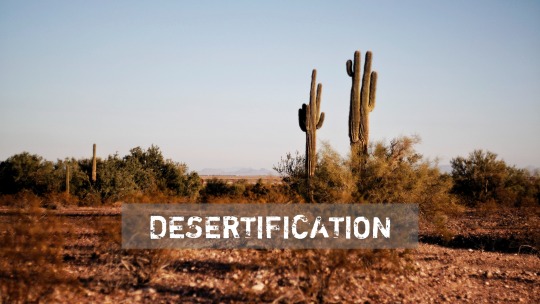
An extreme form of land degradation in aris, semi-arid and dry sub-humid regions of the world is called Desertification. Desertification is therefore, the deterioration of land in arid, semi-arid and dry sub-humid regions (also called dryland) of the world due to climatic variations and human activities, Some of the regions most vulnerable to desertification are Sub-Saharan Africa, drier regions of South America and Asia.
As per United Nations (UN), roughly 2.5 billion people - around 30% of the world’s population live in dryland areas, which cover more than 40% of the world’s land surface.

Major causes of land degradation include both natural and human-induced causes. These include the following:
Prolonged Droughts - Recurrent droughts induce water stresses in soil. Reduced soil moisture makes soil vulnerable to soil erosion. Long droughts are one of the major reasons for land degradation globally. That’s why land degradation is most pervasive in the arid, semi-arid and dry sub-humid regions of the world which receive lesser rainfall and are drought-prone regions of the world. Such lands are called marginal lands where rainfall is insufficient to support crops over the long term. Marginal lands are the soils of arid, semi-arid and dry sub-humid regions of the world where the annual average rainfall is less than 100 cm.
Climate Change - It acts as an additional stress on land in multiple ways. Global warming exacerbates heat stresses and droughts. Warming has resulted in an increased frequency, intensity and duration of heat waves in most regions. It thereby amplifies deficits in soil moisture. Increased heatwaves threaten the already drought-prone regions of Africa, West Asia, many parts of South America, the Mediterranean etc by reducing the overall vegetative and tree growth. Vegetation and soil moisture provide vital safeguards against soil erosion and thus land degradation.
Deforestation - With the increased demand for land for multiple purposes, the incidence of deforestation has increased. Soils devoid of vegetative cover have high erodibility and thus, high rates of soil erosion cause land degradation.
Faulty Agricultural Practices - A few examples of bad farming practices include:
Over-irrigation in arid and semi arid areas causes soil salinisation. When irrigation water evaporates, it leaves behind salts residue. In drier regions like arid and semi-arid regions of the world, the evaporation rates are high and rainfall is insufficient to leach down the soluble salts. Therefore, these regions are more susceptible to soil salinisation induced land degradation.
Excessive use of chemicals like chemical fertilisers, pesticides etc. which can chemically poison the soil.
Overgrazing by Cattle - On marginal lands, rainfall is just barely enough to enable land to produce more vegetation than a desert. In such regions, even light grazing by cattle can be too much grazing which causes soil erosion.
Disposal of Industrial Wastes on Land - Improper disposal of toxic chemicals from industries can contaminate the soil. This is one of the major causes of land degradation due to human activities worldwide.
United Nations (UN) does periodic global assessment of land degradation. Incidence of land degradation as per UN’s 2019 assessment is as follows:
The total degraded area varies from less than 1 billion hectares to over 6 billion hectares globally.
Land degradation due to human activities is adversely impacting the well-being of at least 3.2 billion people.
Land degradation also negatively impacts ecosystem functioning. There is about a 5% reduction in global net primary productivity due to land degradation.
Between 2000 and 2009, land degradation caused global emissions of 3.6-4.4 billion tonnes of carbon dioxide annually.
Soil organic carbon (SOC) is a crucial indicator of soil health. However, it declines with an increase in unsustainable land management practices and land conversion. Over the past part past two centuries, SOC has seen about an 8% loss globally.

Degraded lands offer little economic value or biological productivity. Major consequences of land degradation and desertification are felt both across natural and human systems.
Impacts of land degradation and desertification on natural systems are -
Biodiversity Loss and Loss of Ecosystem Services - land degradation makes soil less fertile. This reduces the vegetative cover over soil. In turn, the floral and faunal species diversity also declines.
Any decline in biological diversity negatively affects ecosystem services as well. For example, degraded soils have poor water infiltration through them which reduces the recharge of ground water aquifer. Similarly, carbon sequestration capacity of such soils declines considerably. This exacerbates the existing climate change.
As per Land Degradation and Restoration Assessment by IPBES (June 2018), land degradation has already had a pronounced impact on ecosystem functions worldwide amounting to a %% reduction in total global net primary productivity. It costs more than 10% of the annual global gross product in loss of biodiversity and ecosystem services.
Climate Change - Land acts both as a carbon sink and a carbon source. It is a carbon sink as it absorbs carbon dioxide during photosynthesis. However, when decomposition of dead organic matter takes place in soils, land emits greenhouse gases.
Climate change exacerbates land degradation. Degraded lands have a compromised ability to support vegetative growth and therefore, reduced ability to act as a carbon sink. Between 2000 and 2009, land degradation was responsible for annual global emissions of 3.6 - 4.4 billion tons of carbon dioxide.
Impact of land degradation and desertification on human systems are-
Threats to Food Security and Livelihood Loss - Land degradation is potent to disrupt the agricultural food production and threaten food security. As per UN, by 2050, global food production would need to increase by 50% to feed the more than 9 billion people expected to live on our planet. However, it becomes challenging as land degradation and climate change together are predicted to reduce crop yields by an average of 10% globally. Reduced food security worsens health for por across the world.
Degraded lands also mean livelihood loss for the poorer sections like farmers and pastoralists. They are dependent on ecosystem services and natural capital for their sustenance.
2. Increased Conflicts and Forced Displacement - In dryland areas, food insecurity and loss of livelihood exacerbate poverty. This often results in resource-driven conflicts. As per the UN, every 5% loss of gross domestic product, itself partly caused by degradation, is associated with a 12% increase in the likelihood of violent conflict. Land degradation and climate change are likely to force 50 to 700 million people to migrate by 2050.
0 notes
Text
Deforestation is Very Harmful as it Causes Global Warming.

Human footprint on land increased phenomenally post the industrial revolution. The demand for land increased for multiple uses like agriculture, industrialisation, mining, infrastructure expansion and urbanisation. The land was made available for all these purposes at the cost of forests being cut down. Thus, deforestation and forest degradation emerged as new environmental challenge.
Deforestation is defined as long term reduction of the tree canopy cover for the conversion of forest to another land use. Forest Degradation is defined as reduction in capacity of forest ecosystem to provide important goods and services.
Some major causes of deforestation and forest degradation are-
Agriculture - Subsistence-based agriculture like shifting cultivation; extensive mechanised agriculture of temperature regions and diversion of forest land into pastures are the major agriculture practices responsible for deforestation.
Development Activities - Deforestation also takes place due to industrial purposes like timber, soya and palm oil plantation; infrastructure projects like roads, railways, mining and urbanisation.
Firewood Harvesting - Firewood is still used as a cooking fuel in many parts of developing countries. It is a major cause of deforestation and forest degradation in these countries.
Lapses in Forest Policies - Illegal timber smuggling and forest fires due to deliberate acts of vandalism are also leading causes of deforestation globally.
Climate Change - It poses multiple threats to forests. With climate change, the incidence of forest fires is rising due to prolonged droughts and heat waves in many parts of the world. Coastal forests like mangroves are threatened due to sea-level rise.
Pest and Disease Attack - Pests like shoot borers, sap suckers, xylophagous pests, gall formers, canker-causing insects etc. are responsible for forest degradation in India.

Biodiversity loss
Climate change
Air pollution
Soil erosion and land degradation
Flooding and groundwater depletion
Decreased resilience in times of natural disasters like heavy precipitation, Tsunamis, cyclones
Agriculture losses and food insecurity.
0 notes
Text
Preserve Forests, Preserve the Planet

Forests are not just assemblage of trees.They are complex ecosystems supporting tremendous biodiversity of flora and fauna. Forests are also critical indicators of other natural resources like water bodies, soil and air quality and have great significance for mankind too. Forests have multi-dimensional significance discussed as follows-
Ecological Significance of Forests -
Forests harbour a wide range of biodiversity from microbes to plants and animal species. They provide habitat to many animal species. As per the Food and Agricultural Organisation (FAO), forests also support more than three-quarters of the world’s terrestrial biodiversity.
They are critical for soil, land and water management. The roots of the trees bind the soil particles together and control soil erosion. During precipitation, trees also increase the residence time of water on land. Thus, forests are effective in reducing surface runoff and controlling floods. Reduced surface runoff also means better recharge of groundwater aquifers. Thus, forests are natural water harvesters.
Forests are central to climate regulation. They play a critical role in carbon sequestration by absorbing about two billion tonnes of carbon dioxide every year as per the estimates of FAO. Carbon is stored not just in the living biomass but also in dead litter in the forests. Forests also regulate climate by maintaining global water vapour flows from land. Thus, they help in climate regulation by maintaining the carbon and hydrological cycle over the planet.
Forests are a natural buffer against many natural disasters. Coastal forests like mangroves provide protection against natural disasters like Tsunamis, cyclones, and coastal erosion due to sea level rise. Forests on land help in controlling floods and landslides. Urban forests are an effective way to mitigate air pollution and the urban heat island effect.
Economic Significance of Forests-
As per FAO, about 1.6 billion people globally depend on forest (directly or indirectly) for their livelihood. About 300 million people live in the forests including 60 million indigenous people. 250 million extremely rural poor completely depend on forest for livelihood and nutrition. One of the very important livelihoods of indigenous people is collection and sale of Minor Forest Produce (MFP) or Non-wood Forest Produce (NWEP)
NWEP means all non-timber forest produce of plant origin. For example- fodder, cane, leaves, gums, waxes, dyes , resins and many forms of food including nuts, wild fruits, honey, lac, tendu or kendu leaves, tusser, medicinal plants, herbs, roots, tubers etc.
Forets also provide economic resources like timber which are used in furniture and paper and pulp industry.
Forests secure agricultural production and food supplies globally by supporting wild pollinators.
Apart from the ecological and economic significance of forests, they also hold cultural and religious significance for indigenous groups and traditional forest dwellers. The ways of life of tribal groups are intricately linked with forests. Sacred groves in India are a prominent example of this. Sacred Groves are forests that are dedicated to local folk deities or tree spirits. These are conserved and worshipped by local communities because of their religious beliefs and traditional rituals.
0 notes
Text
Biodiversity of India Under Threat-

At least 10% of India’s plant species and a larger percentage of its animal species are threatened. The Asiatic cheetah and the pink-headed duck are amongst the well-known species that have become extinct in our country. More than 150 medicinal plants have disappeared in recent decades. 10% of flowering plants, 20% of mammals, and 5% of birds are threatened. Hundreds of crop varieties have disappeared and even their genes have not been preserved.
The biodiversity hotspots in India are the Eastern Himalayas and the Western Ghats. Both contain a large number of endemic species, which are now under threat.
What will be the Impact of Biodiversity Loss in India and Elsewhere?
The poor people in the developing countries, who are dependent on biodiversity for their daily survival, will feel the impact first. Soon, however the industrialized countries will also start experiencing the effects. Most of their food crops, medicines, textiles, spices, dyes, and paper originate from plants in the developing countries. The destruction of the rain forests means that less carbon will be absorbed and natural climate-control mechanisms are lost.
This will have a major impact on the world’s climate.
What Actions have we taken to conserve India’s Biodiversity?
The first protected area in the country was the Corbett Natonal Park, established in 1936. Currently, there are more than 90 national parks, 350 wildlife sanctuaries, and 15 biospheres covering about 5% of the land. In addition, there are several reserve forests.
In the national parks, habitations and private ownership of land are not permitted. Traditional activities like grazing and fuel wood collection are also prohibited. On the other hand, in sanctuaries some activities are permitted.
A biosphere belongs to the third category of protected areas. Here the wild flora and fauna are protected, but the people are allowed to live in the area and carry on their traditional activities.
Of the 15 biosphere reserves of India, the largest three are the Rann of Kutch (12500 sq km.), the Gulf of Mannar (10500 sq km.), and the Sundarbans (9600 sq km). In addition, there are special projects to protect certain animal species like the tiger and the elephant. For example, Project Tiger attempts to conserve the tiger population.
0 notes
Text
Prevent Smog -
Breathe Healthy and Be Healthy.

The word ‘smog’ was used to describe the combination of smoke and fog in 1911 by Dr. H.A. des Voeux. Smog is the combination of various gases with water vapour and fine particles. Smoke particles get trapped in the gog giving it a yellow/ black colour. This smog settles over cities for many days. It is dangerous for plants, animals, human beings and materials.
There are two different types of smog:
Photochemical Smog
London Smog
Photochemical Smog
This smog is produced when sunlight acts upon motor vehicle exhaust gases such as nitrogen oxides and volatile organic compounds. .
NOx+VOCs+ Sunlight → Photochemical smog
Ozone, nitrogen oxides, peroxyacyl nitrates (PAN), and volatile organic compounds are the main components of photochemical smog.
Effects of photochemical smog
Ozone is the main component of photochemical smog. It is a powerful oxidising gas. It attacks our tissues. It causes sore throats, inflammation discharges in nasal passages etc.
Ozone affects lung function and the lower respiratory tract.
Ozone also attacks plants mainly citrus fruits, potatoes, legumes, soya beans etc.
Other photochemical smog components and ozone cause damage to buildings and degrade rubber, clothing etc.
Peroxybenzoyl nitrate produced in photochemical smog is 100 times more toxic than PAN.
London Smog
When sulphur is emitted in large amount and air contains high liquid water contents, then London smog is formed. In 1952, about 4000 deaths caused in London due to yellow fog. It lasted for 5 days. This was called the Great London Smog.
In 1952, there was cold weather and windless conditions. Low grade coals were burnt. This increased the amount of sulphur dioxide in the smoke. Air pollutants formed a thick layer of smog over the city.
Due to the smog, people could not see anything to a distance of a few yards. Respiratory diseases and lung function disorders were caused due to this smog.
0 notes
Text
Conserve Wetlands to Preserve Biodiversity

Wetlands refer to complex ecosystems encompassing a wide range of inland, coastal and marine habitats such as floods, plants, swamps marshes, tidal marshes etc.They have the characteristics of both dry and wet environments and show wide diversity based on their genesis, geographical location, hydrological regimes and substrate factors.
Whenever land and water meet, a transitional zone is created which produces unique ecosystems. Wetlands are the areas with open standing water (that is the water table is at the surface and ground is saturated with water) with vegetation.
A special soil environment is created due to standing water with little or no oxygen. Therefore, in wetlands water is the primary factor controlling the environment and the associated plant and animal life.
Wetlands can be:
Either natural or artificial (examples of man-made wetlands include fish and shrimp ponds, farm ponds, irrigated agricultural land, salt pans, reservoirs, canals etc).
Either temporarily or permanently covered by water.
Either static or flowing water
Fresh, brackish or salt water (including areas of marine water the depth of which at low tide does not exceed 6 meters)
Wetlands occur across latitudes from the tundra to the tropics. However, how much of the earth’s surface is presently composed of wetlands is not known exactly. As per United Nations Environment Program estimates, their area could be about 570 million hectares. Whereas, some other estimates suggest that their area could be more than 700 million hectares.
There are five major wetland types:
Marine (Coastal wetlands including coastal lagoons, rocky shores, and coral reefs)
Estuarine (including deltas, tidal marshes, and mangrove swamps)
Lacustrine (Wetlands associated with lakes)
Riverine (wetlands along rivers and streams)
Palustrine (meaning marshy’ - marshes, swamps and bogs)
Significance of Wetlands:
Biologically Productive - Wetlands are among the world’s most productive environments. They are cradles of biological diversity, providing the water and primary productivity upon which countless species of plants and animals depend for survival. They support high concentrations of birds, mammals, reptiles, amphibians, fish and invertebrate species.
Storehouses of Genetic Material - Wetlands are also important storehouses of plant genetic material. Rice, for example, which is a common wetland plant, is the staple diet of more than half of humanity.
Carbon Sinks - Wetlands store carbon by primary production. Carbon is stored in living plants, animals and rich organic soils of wetlands. However, they are also natural emitters of GHGs like methane due to anaerobic conditions.
Water Storage and Filtration - They also provide services ground water recharge, water storage and water filtration. There are wetland micro-organisms and plant species like cattail and reed help in water purification by filtering out toxins from polluted water. Thus, they are natural water filters.
Nutrient Cycling - Many nutrients and chemicals het naturally recycled in wetlands. They have an important role in bio-geochemical cycling.
Bioshields - Coastal wetlands help in shoreline protection, at as a buffer during disasters like cyclones, tsunamis and storm surges. Inland wetlands help in mitigating urban flooding by acting as water-sponges.
Economic Benefits - Wetlands provide tremendous economic benefits, for example: water supply; fisheries (over two-thirds of the world’s fish harvest is linked to the health of coastal and inland wetland areas); agriculture, through the maintenance of water tables and nutrient retention in floodplains; timber production; energy resources, such as peat and plant matter; wildlife resources; and recreation and tourism opportunities.
Threats to Wetlands:
Wetlands are valuable but also sites of ecological degradation due to multiple human activities. Some of the main threats to wetlands include:
Encroachment and construction over wetlands due to agriculture and urban expansion.
Water diversion for dams, irrigation canals etc. This causes fragmentation of hydrological regimes and catchment degradation of wetlands.
Pollution due to domestic sewage, solid waste disposal, agriculture run-off and industrial effluents. Pollutants like agriculture-runoff and sewage disposal cause eutrophication in wetlands.
Overharvest of wetland resources like fisheries etc.
Aquaculture development.
0 notes
Text
Biosphere Reserves (BRs)

Biosphere Reserves
These are an international designation by UNESCO for the representative parts of natural and cultural landscapes extending over large area of terrestrial, coastal and marine ecosystems.
In 1968, UNESCO organised the Biosphere Conference that saw the beginning of the concept of a ‘Biosphere Reserve’. The aim of this conference was to reconcile conservation of biodiversity and sustainable use of natural resources.
This conference resulted in the launching of the UNESCO’s ‘Man and the Biosphere’(MAB) Programme in 1971. It is an intergovernmental scientific programme that aims to establish a scientific basis for the improvement of relationship between people and their environments.
Functions of Biosphere Reserves
Biosphere reserves have three inter connected functions:
Conservation - Protecting cultural diversity and biodiversity, including genetic variation, species and ecosystems.
Development - Fostering economic and human development that is environmentally and socially sustainable.
Logistic support - Facilitating demonstration projects, environmental education and sustainable development education and training, research and monitoring ( research and monitoring are also integral to the conservation and development functions).
Zones of Biosphere Reserves
Biosphere Reserves have three interrelated zones that aim to fulfil three complementary and mutually reinforcing functions:
Core Area - It is a strictly protected ecosystem that contributes to the conservation of landscapes, ecosystems, species and genetic variation.
Buffer Zone - It surrounds or adjoins the core areas, and is used for activities compatible with sound ecological practices that can reinforce scientific research, monitoring, training and education.
Transition Area - It is the part of the reserve where the greatest activity is allowed, fostering economic and human development that is socio- culturally and ecologically sustainable.
Biosphere Reserves help in reconciling the conservation of biodiversity, the quest for economic and social development and maintenance of associated cultural values. BRs are thus living examples of how human beings and nature can-exist while respecting each other’s need.
They are nominated by national governments and remain under the sovereign jurisdiction of the states where they are located. Their status is internationally recognised. As of March 2020, there are 701 biosphere reserves in 124 countries; including 21 transboundary sites.
0 notes